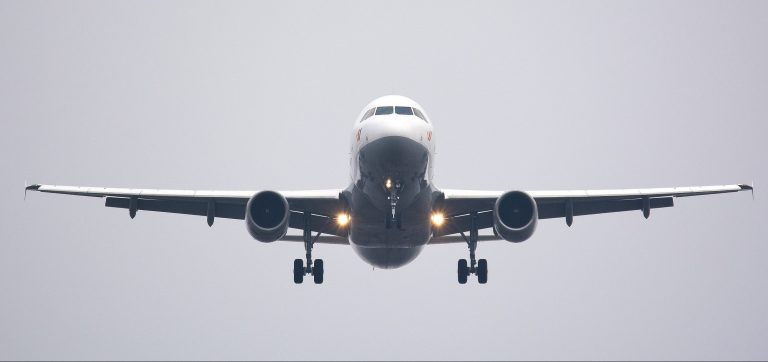The Concorde was famous due to its unique supersonic capability, allowing it to fly faster than any other commercial airliner.
From 1976 to 2003, it was the world’s most expensive air travel: $1,500 for a round trip the first year and $12,000 for the last.
Yet, there were a few reasons that led to the failure of the Concorde. Which makes it another airline collapse along with Pan Am.
Reasons why Concorde failed:
1. Flying Concorde was too expensive
Concorde was designed and manufactured jointly by France and the British Aircraft Corporation under an Anglo-French treaty.
Twenty aircraft were constructed, including six prototypes and developmental aircraft. The Concorde was purchased and flown by only two airlines: Air France and British Airways.
The aircraft was mostly used by wealthy passengers who could afford to pay a high fee for the aircraft’s speed and luxury service. Concorde was primarily constructed of aluminum and a high-temperature alloy similar to that used in aero-motor pistons to endure high external temperatures and thermal expansion while traveling at supersonic speeds.
The price of fuel was one of the factors that hampered Concorde’s effectiveness. The fuel used by Concorde during an average journey was 6,771 gallons.
The cost of fuel rapidly exceeded the revenue from the flight, making Concorde’s use financially unsustainable. Although the expense of the aircraft and the fuel proved to be a cause for concern, there were additional issues that also played an integral part in why Concorde failed.
2. The Supersonic jet wasn’t practical enough
Another problem developed as a result of the limitations of supersonic travel.
Concorde could only fly supersonic over the ocean since it sent a shockwave into the air that was powerful enough to break glass if it flew over heavily populated areas.
Every time Concorde flew nearby, cities would file numerous noise complaints, which gave airlines and manufacturers a lot of issues.
The most important thing in air travel is passengers’ safety and to be sure that they have a comfortable journey. Therefore, the engine plays a vital role in jets.
However, the Concorde seemed to ignore the fact and did not adopt any measures for their passengers.
3. Concorde was failed by competition
In comparison, its competitor, Tu-144 had adopted the use of lighter and more fuel-efficient engines. Meanwhile, the Concorde used older and heavier engines that required more fuel and maintenance, making it less economical to operate compared to the Tu-144.
4. The investors gave in
British Airways was compelled to retire Concorde because Air France and Airbus, the plane’s French-based manufacturer, declined to continue supporting it, which is another factor in the aircraft’s closure.
Airbus possessed the air safety certificate for Concorde, which is a requirement under safety regulations for every aircraft.
It kept track of any safety upgrades made to the aircraft and offered technical guidance to British Airways personnel.
According to Jean-Cyril Spinetta, Chairman and CEO of Air France,
“It is with regret that Air France has taken the decision to stop operating Concorde. But this choice had to be made. The deterioration in the economic situation over the last few months has resulted in a drop in business traffic which has particularly weighed on Concorde’s results. The aircraft’s maintenance costs having been significantly increased since it was brought back online, its operation has become heavily and structurally loss-making. Under these conditions, it became unreasonable to pursue it for much longer”
Rod Eddington, British Airways’ Chief Executive, said, “Concorde has served us well and we are extremely proud to have flown this marvellous and unique aircraft for the past 27 years. This is the end of a fantastic era in world aviation but bringing forward Concorde’s retirement is a prudent business decision at a time when we are having to make difficult decisions right across the airline.”
5. The future of the invention was doomed
The manufacturer of the aircraft, Airbus, confirmed the need for an expanded maintenance program in the upcoming years after extensive discussions over an extended time.
British Airways decided that such an investment could not be maintained. Considering the declining revenue driven by a global decline in demand for all types of premium travel in the airline business.
Noel Forgeard, President and Chief Executive Officer of Airbus, said,
“Airbus’ predecessors Aerospatiale and British Aircraft Corporation created Concorde some 40 years ago and we are proud of this remarkable achievement. But its maintenance regime is increasing fast with age. Thus, as an aircraft manufacturer, we understand completely and respect the decision of British Airways, especially in the present economic climate. It goes without saying that until the completion of the very last flight, we will continue to support the airline so that the highest standards of maintenance and safety are entirely fulfilled.”
An overview of how Concorde failed:
The Concorde, a supersonic passenger jet introduced in 1976, was a joint venture of British and French aeronautical industries. Its headquarters were located in London, UK, and Toulouse, France.
The Concorde was unable to compete with other subsonic airliners. In 2000, an Air France Concorde’s engine failed and killed all 109 people on board and 4 people on the ground. Finally, in 2003, the Concorde was retired from service.
The Concorde’s engines were much noisier, which led to increased public opposition to the supersonic jet due to the noise pollution it caused.
Furthermore, the aircraft was highly expensive to operate, which limited flight availability. For many customers, the fare prices were unaffordable due to operating expenses. Both British Airways and Air France decided to make New York City their only regular flight destination as a consequence of the resulting financial losses.
The high operating costs, combined with the public’s growing environmental concerns, ultimately led to the Concorde’s commercial failure.
Learnings from the failure story:
Every new idea may not bring a fortune but rather a failure and disruption. A number of companies went bankrupt because they either failed to be innovative, didn’t prioritize customers, or couldn’t keep up with the competition.
That is why, it is important to capture all ideas, prioritize the feasible ones and implement the most promising ones.
Also read: Palm inc- The 4 reasons that led to its disruption.



